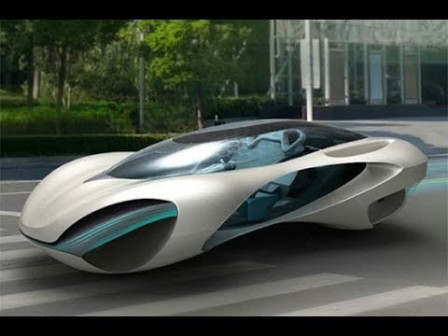Future Transportation
Posted on Thursday 27 August 2020, 21:30 - Tech - Permalink
- Article
- |
- Comments (4)
- |
- Attachments (0)
 Q: Can you describe transportation?
Q: Can you describe transportation?
HS: Electric cars will be popular but also atomic energy will be involved in propulsion. The technology to release power from an atom will become known again on a small scale, without the dangers from fusion & fission currently recognized, also dangers not recognized.
Q: How will this be done?
HS: Electricity will be used to start the process; once begun, it will self sustain, generating its own electricity to continue the split of atoms. Current use requires that massive numbers of atoms be smashed; this causes an explosion or a controlled process that can run away. The new process will isolate just the few atoms needed by using the proper electrical field and then separate just the needed ones. No risk of runaway or explosion will be present. This energy will then heat and propel a small, closed loop steam turbine that will power the vehicle. Water is widely available. Only a bottleful will be needed to travel 1,000 km.
Q: What emissions or waste will there be?
HS: None.
Q: What about atomic radiation?
HS: Insufficient atom splits will take place to produce enough to have effect and the metal enclosure will block this anyway.
Q: How will the electricity begin?
HS: New battery technology will be introduced, based on - as yet unknown - metallurgy. These new batteries will be more compact and hold much more electrical potential than is now believed possible. The flow will be amplified magnetically; currently magnetic fields are used to generate an electrical flow where none is present. This new technique will use a magnetic field to amplify the flow already created by the batteries. The concept is similar to the coil used to create a spark to fire plugs in a combustion engine. The creation of a pulse-like electrical flow will follow this process. The danger inherent in the process is heat; if the electrical flow is amplified for more time necessary to begin the atomic activity, the heat will render the unit inoperable and can damage it. This risk will be avoided by controlling the time necessary; no more than several milliseconds will be needed.
Q: What atomic material will be used?
HS: Any material can be used, but the density at ambient temperatures humans require make some more favorable than others. We will see lighter gases such as hydrogen employed. Heavy elements such as uranium scatter large numbers of protons and neutrons and cause a massive chain reaction. By isolating the hydrogen molecule of just two atoms, only the two protons will be released and the "space" inside the former atoms will be collapsed as the electrons are struck off their orbit. The enclosure will capture the protons and electrons and the build-up of an electrical field will be easily and safely discharged.
Q: What is the objective of this process?
HS: To heat the steam loop and feed the turbine to drive the wheels of the vehicle.
Q: What size vehicle can use this?
HS: Any size; steam turbine operation can propel massive sea vessels as it has done with more "crude" style nuclear fission now; miniature systems suitable for 2 to 4 passenger vehicles will also be feasible and reliable.
Q: Why has this method not been explored until now?
HS: The ability to separate small groups of molecules - up to approximately several million or so - requires understanding of the composition of the atomic components. A solidity is assumed similar to the perception of physical objects in the three dimensions. The rotational nature of the energy force, oscillating at several dozen multiples of the speed of light, will be revealed. Along with this explanation will be the technology to utilize the cyclical pulses of this rotational speed. It is said that protons and neutrons vibrate faster, and revolve around one another more quickly, when an object is heated. This indeed happens, and the higher movement is manifestation of the pulsing nature. Once this pulse can be measured, it can be anticipated and then controlled. It is this control which will show how the molecules are separated and then "cracked" open to release the energy within.
Q: Will the vehicles be powerful?
HS: More than today, but the application of power will be easy to control, just as is done now through PRVs and PCVs (pressure relief and pressure control valves)
Q: Will the vehicles be complicated?
HS: No, simple and reliable. The steam loop will be sealed and only demineralized water will be used; no corrosion will set in and lubricating oils will last for many years.
Q: Will the vehicles have all features as they do today?
HS: Yes and more.
Q: Will the vehicles drive the same?
HS: Yes and no; roads will have tracks inserted below the surface to guide the vehicles, which will weigh less and be stronger than today. They will weigh about half. The track will guide the vehicle in its lane via magnetism; this will automatically brake a car coming too close to others and will prevent lane changes where these are not safe. The greatest advantage will be on higher speed roads such as freeways, highways, motorways and the like. Motorists will be able to enter a destination and have the vehicle calculate and then follow the route, with no hands required. This will allow conversations and other more productive use of time, reading will become common in vehicles. Motorists will also have the ability to control the vehicle as is done now; the electronic operation will step in and override dangerous, impending circumstances much as stability control systems now do.
Q: How common will vehicles be?
HS: Less so than today, much less so. The use of crude oil derived fuels, as has been said here previously, will drop off rather quickly. This will precede and cause structural changes throughout society. The use of vehicles for driving to employment, pleasure, shopping, visiting will reduce substantially. Bikes will make a comeback and we will also see this technology applied to three and two wheeled vehicles, called motorbikes or cycles and "trikes" 3 wheelers with either two in front or in the rear. The trikes will have the lane magnetism system similar to a 4 wheeled vehicle, the 2 wheeled motorbikes will not. These latter ones will be largely recreational as now; as zero emissions are produced, the relative ease of manufacture of the less miniature systems in cars will predominate. It must be emphasized that electrical vehicles will also be available, common and less expensive, due to ease of manufacture. Heavier loads and the "trucks" of tomorrow will employ the atomic steam turbine propulsion, as electrical power will be a challenge to package efficiently and move a heavy unit. The electrical vehicles will be more popular for passengers and light loads, similar to the cars of today.
Q: Can you speak about train travel?
HS: Certainly, these will employ the atomic steam turbines. Electricity for rail power will be possible but less feasible for the larger rail cars; it will be more expensive to build a generation unit for the new electricity than individual power units. It must also be said that rail travel will enjoy a resurgence as air travel falls away, the causes of which have been enumerated here previously.
Q: Is there potential for application to weaponry?
HS: No, the method of atom cracking to heat to steam will not provide advantage to weapons but this subject leads away from transportation; there will be little international aggression and little opportunity to employ weapons now commonly deployed. Awareness and a shift in attitude, approach and perspective will do this. The current justification for defense forces - enemy threats - will diminish. Little ability to conduct war will be held by the leaders now capable of doing so; other nations with large, efficient military capability will reduce it as it will be seen to not be necessary.
Q: How will this land vehicle system work?
HS: The driver will initiate movement by activating the atomic cycle; the batteries will provide both the spark and the magnetic field. When the circuit is closed the magnetic field will collapse around a coil as the current is fed through; it will be amplified through a crystal and the resulting output will be sufficient to split the hydrogen molecule apart into the two atoms and then strike off the electrons. This will be possible because of the near vacuum into which the hydrogen atoms have been introduced; there will only be several hundred thousand in the atomic chamber. The resulting collapse of the atoms will release the energy and create heat, and this heat will produce steam and pressure. As one molecule splits, it will cause more to split and no longer will electrical current be required. This entire process - from a cold unit to operating pressure - will require but 5 to 10 seconds.
Q: How will the hydrogen be replenished?
HS: The unit will draw trace amounts of steam from the condenser inlet, and the water molecules will be split. The oxygen will separate from a low voltage electric circuit taken from the generator run initially by battery power and then by steam pressure. The oxygen has an atomic weight of approximately 16 and hydrogen just over 1. Because the oxygen is 16 times heavier it will sink and the hydrogen will be easily drawn off to be injected into the combustion chamber. The number of protons per atom - just one - means there will not be enough to have a runaway reaction.
Q: Critics will say this will not work because we cannot create an electrical flow sufficiently high to do this.
HS: Not yet, no. Soon the use of a commonly available crystal, found everywhere on Earth, will demonstrate that the current can indeed be magnified. Once the heat and steam pressure are powering the turbine, sufficient electricity will be generated to replenish batteries and run all devices. The key to this new technology lies in two aspects; the new metallurgy for batteries and the use of crystals. All of the remaining technology is now understood on Earth, and used to greater or lesser extent in many applications.
-
xnxx tube · 03 September 2020, 13:02
-
I think that is one of the most significant information for me.
And i am happy reading your article. However should statement on some basic issues, The web site style is great, the articles is actually excellent : D.
Good task, cheers -
Marla Hollon · 05 September 2020, 01:28
-
hello there, your style is very good.Following your news.
-
technology · 05 September 2020, 19:50
-
Hi! I've been reading your weblog for a long time now and finally got the
bravery to go ahead and give you a shout out from Atascocita Texas!
Just wanted to tell you keep up the fantastic work! -
Audry Sinon · 06 September 2020, 02:49
-
hi, your article is very good.Following your posts.



